On my journey to New York´s rich maritime history, one big name cannot be missed on the to-do list when in Manhattan: The South Street Seaport Museum. It is located on the southern-easterly tip of he Financial District and can be reached by foot very well. But behold: The name “museum” is a bit misleading as it is more a conglomerate of different locations forming the one South Street Seaport Museum.
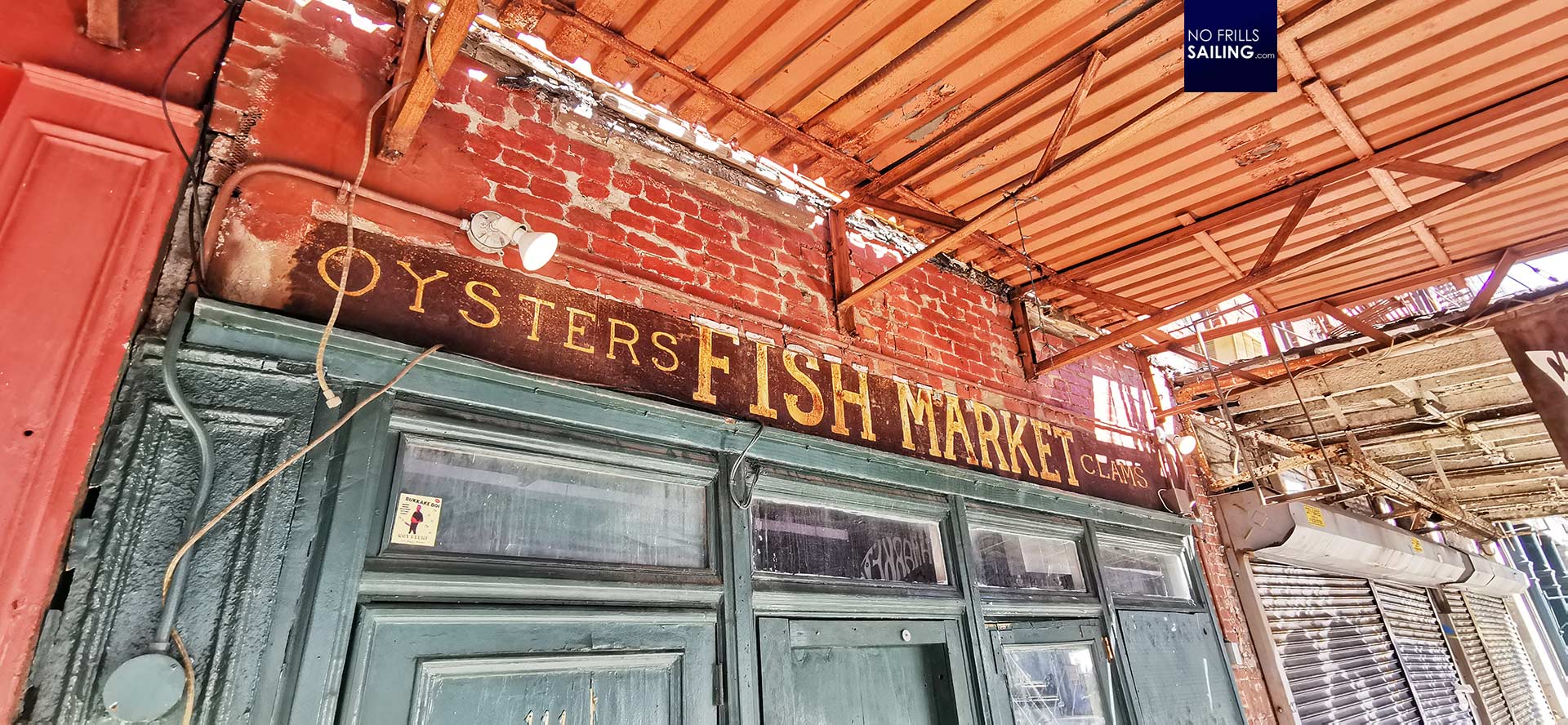
The whole area had been the fishing port of Manhattan back in the day. Surrounded by the high rise building of the Financial District, the handful of classic of 5-story brownstone houses look like a foreign body. Many of those aren´t renovated yet. Did you know that “The Big Apple”, as New York´s nickname currently goes, was in fact “The Big Oyster” in the past? That was due to the fact that the colonizers quickly found out that the bay area was bustling with extra-fat Oysters here …
Visiting the South Street Seaport Museum
The South Street Seaport used to be the principal fishing harbors of New York and was in use up until the 19th Century. The area still contains the biggest collection of classic commercial buildings of New York and was deemed worthy of conversation in the late Sixties. Back then worn-down area adjacent to the Brooklyn Bridge. Back in the day, hardly anyone in booming New York was interested in the history of the city: Too much money was to be made with building and renting out high rising skyscrapers.
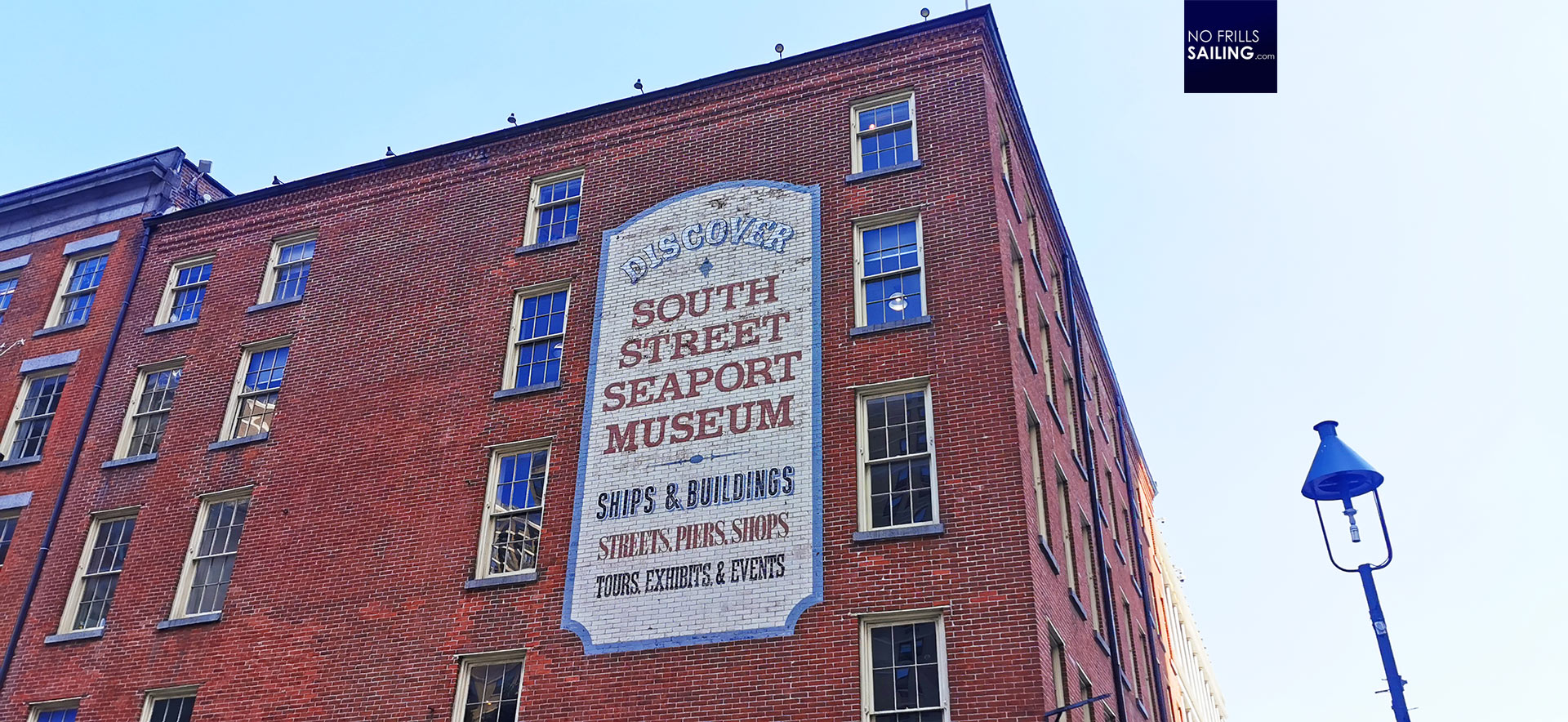
It took many years well into the early Eighties when the area around old Fulton Fish Market was finally secured and the project got underway. As Manhattan and New York in general are one of the most expensive places in the world, one can imagine how hard it was to motivate the City, investors and other sources of money to support the project of the South Street Seaport Museum. And it is a little wonder that nowadays the area is presenting itself freshly renovated, full of people – tourists and New Yorkers alike – as the hotspot it deserves to be. Now, let´s get into the museum …

Which is a disappointment, I have to say. After paying 18 Dollars per person admission fee, it´s literally one single room with some large, colorful prints on the walls. Those inform briefly about the history of New Amsterdam turning New York in general and the history of the South Street location. That´s it, that´s the museum. Well, I know that Americans love big marketing adverts and catchphrases, but calling this info-room a “museum” is certainly more than awkward. But luckily, as I wrote before, the museum consists of many locations and those 18 Dollars aren´t wasted at all – only a few minutes away, some highlights are awaiting me.
Down at pierside
The harbor wouldn´t be the harbor without some ships. I know this area for more than 20 years now. In 2001 (yep, during the infamous September 11 attacks) I was here for my first ever time and I can still very vividly remember strolling around the South Street area. I can also very vividly remember seeing two tallships being present: One was “our” beloved PEKING and the other another big freight carrying classic square rigged sailing ship, the WAVERTREE of Liverpool.
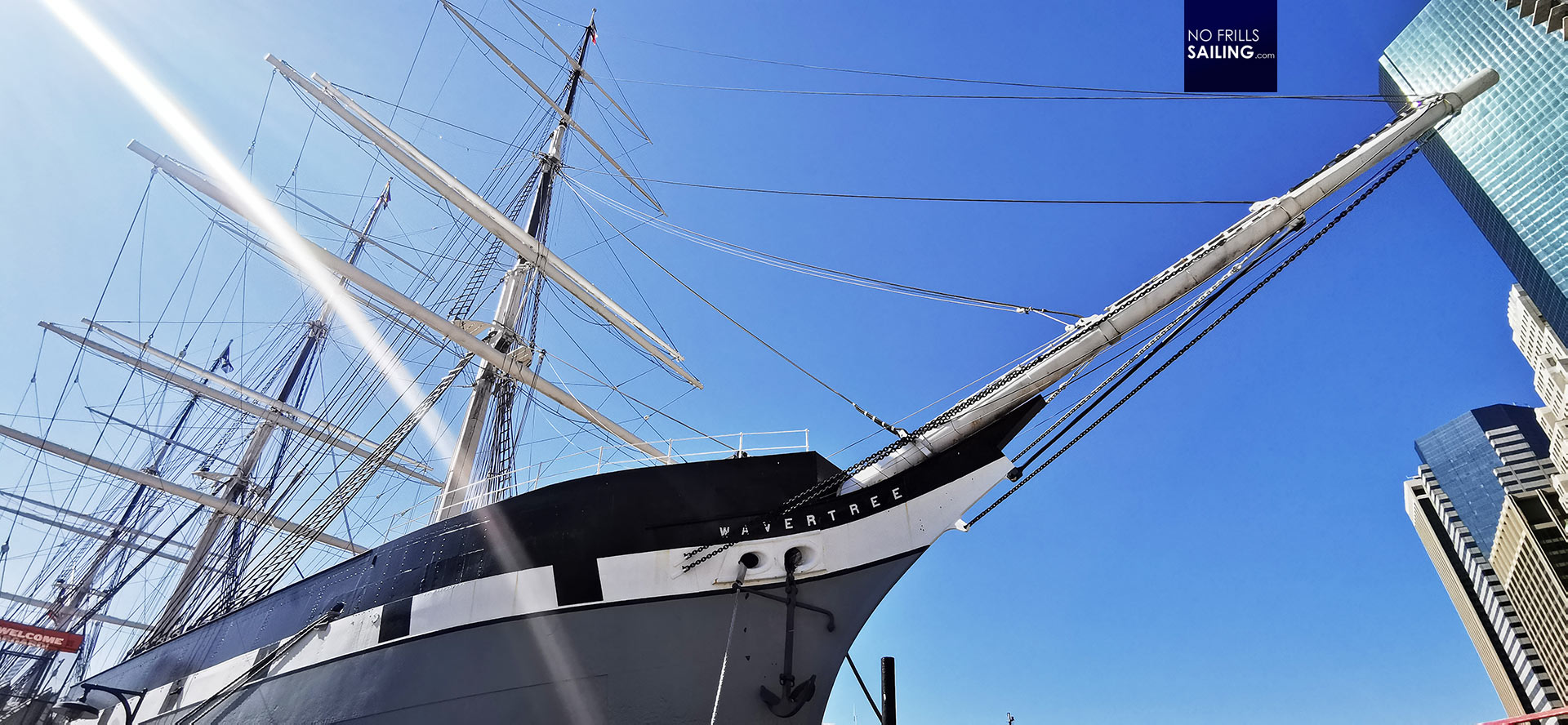
The latter is still moored at South Street Seaport pier, as the PEKING had been given back by the museum some years ago and is now absolutely perfectly renovated moored in Hamburg as a museum (you might have read my two articles about visiting the PEKING, click here and here). Well, the reason why the museum gave back the PEKING is apparent when taking a tour aboard the equally big and fascinating WAVERTREE.
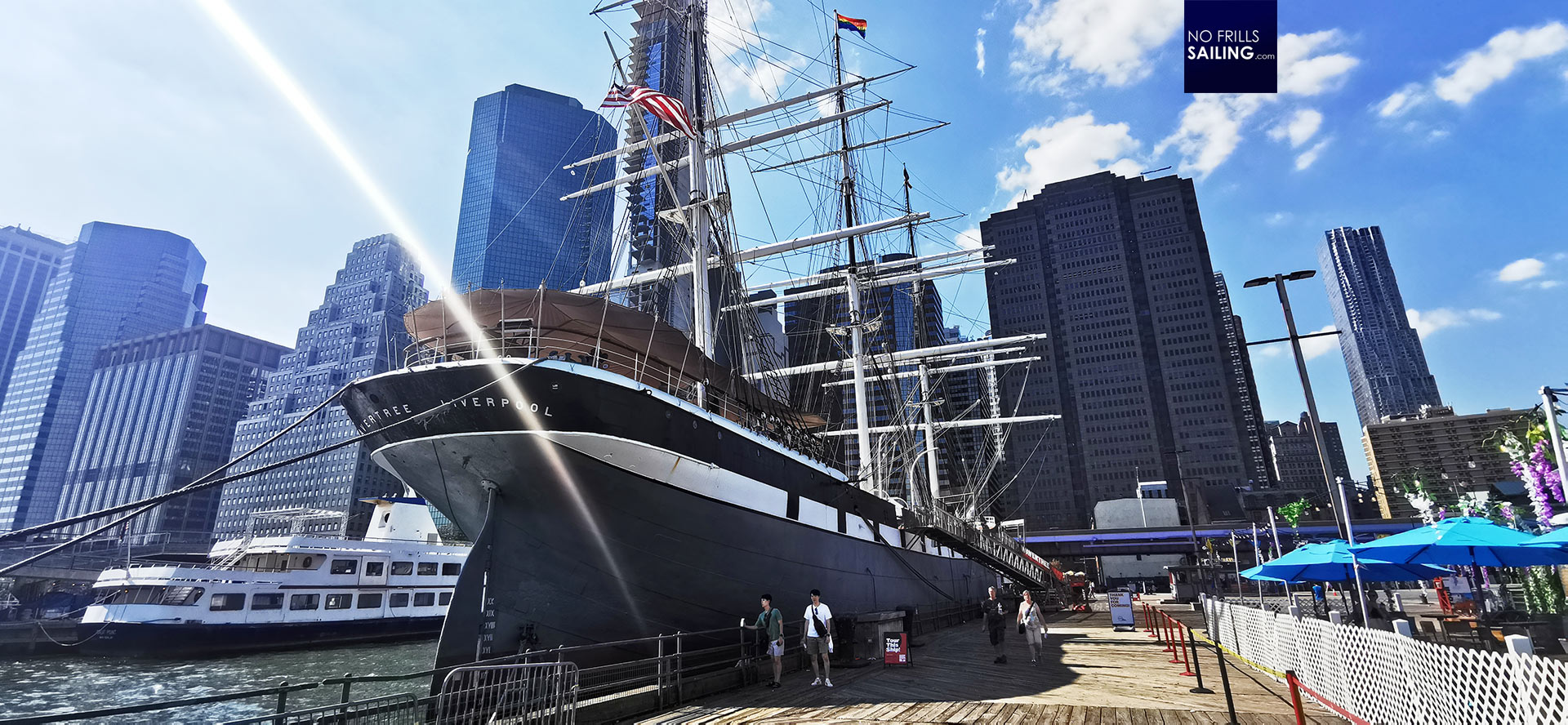
Our ticket (the 18 Dollars per person) comprise not only admission to the “museum” but also to the various other locations of the South Street Seaport-complex. One of them being WAVERTREE, a 99 meters long impressive three-masted Windjammer, built back in 1885 in iron. She is one of the very last big sailing ships being built before the era of the coal-fired steam-engine powered freighters killed the last of them. And she has had a very colorful, exciting history too.
Aboard WAVERTREE
Sadly, knowledge about her history cannot be acquired aboard taking a tour. The ship is open for anyone bearing the South Street Seaport Museum-sticker. I went aboard, which indeed is very impressive!, and started my tour at her bowsprit. There are no presentation boards nor any other way of information. Which is very sad because there is so much space to tell her story. Walking all the way back on her deck, one can visit the crew´s quarters.
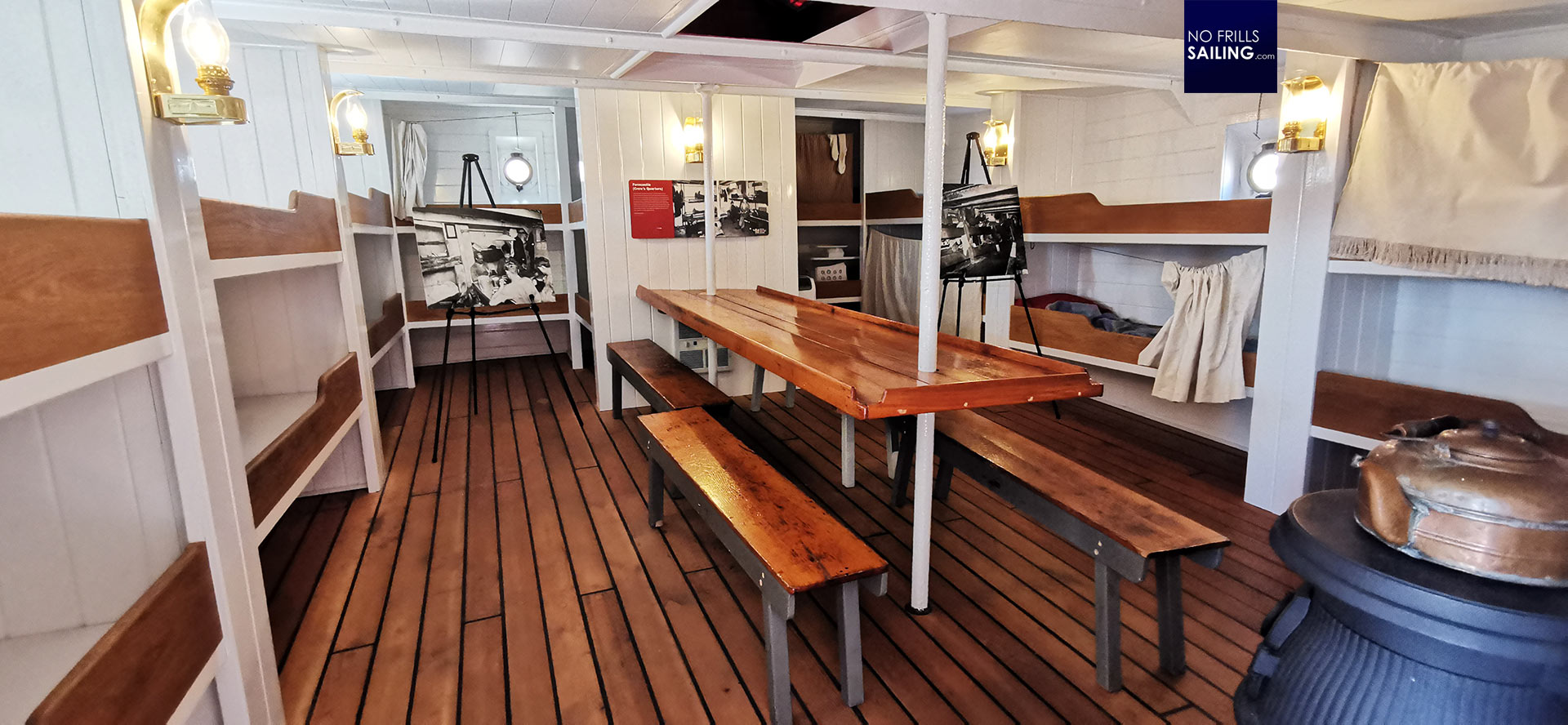
Those have been renovated and prepared masterfully and it is very interesting to see both quarters of the crew and the adjoining galley. Nevertheless, I missed information boards or at least any source for some deeper info on the ship, on her crew and the lives they had to live sailing this colossal ship around the Hoorn. Walking further aft, one enters the Officer´s and passenger area.
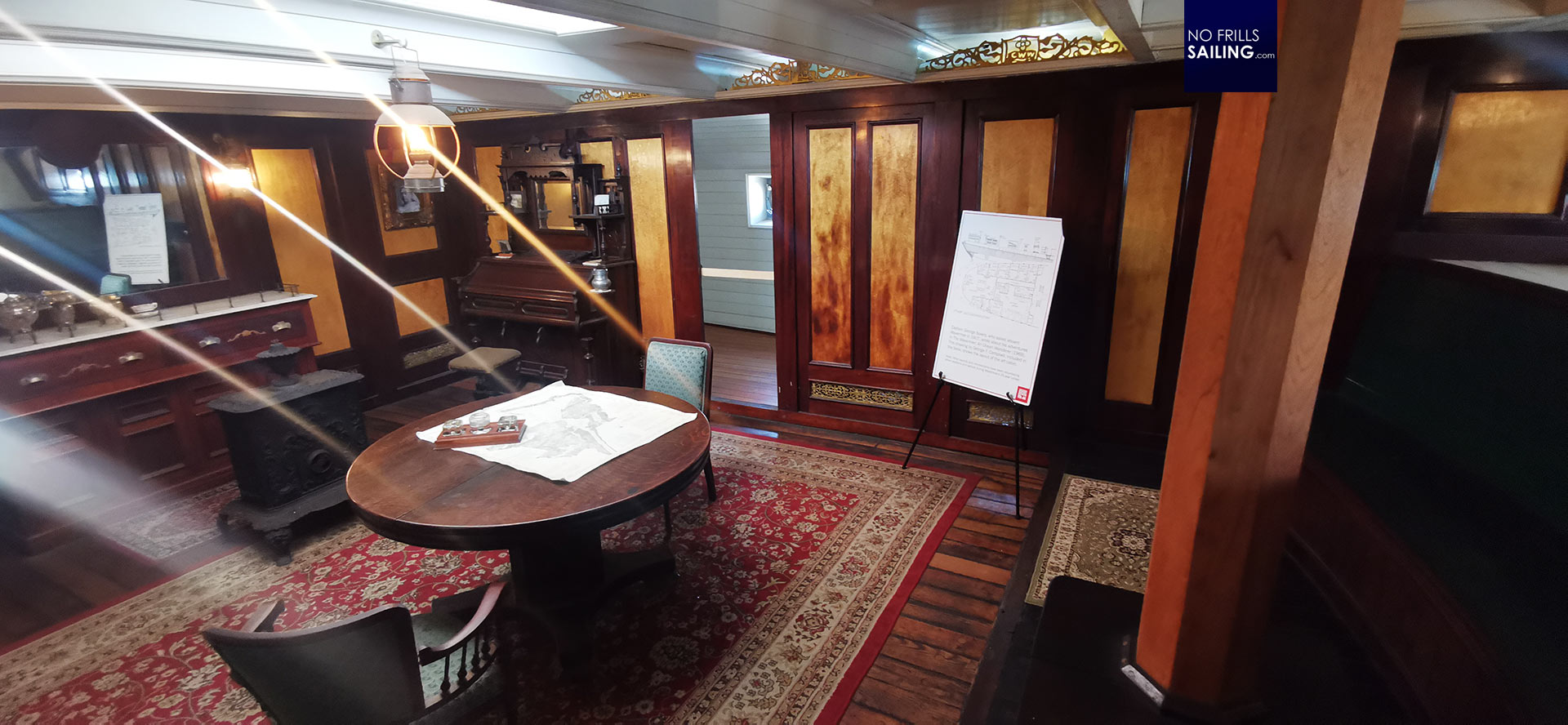
Also, those had been renovated quite nicely. I did not know that both Officers and passengers aboard a big freight sailship of that time could indulge in such luxury. The saloon features a great sofa in the back, a piano, which I can imagine made for quite a party when played by somebody with talent, and a big table for dinner, a nice round of Poker or a Chess session. Again, nicely done – but hardly any deeper information available.
What a great potential
The biggest disappointment – because I know from PEKING just how massively impressive this would have been! – is the fact that WAVERTREE´s huge freight-area which is the whole length and width of her hull wasn´t accessible to the public.
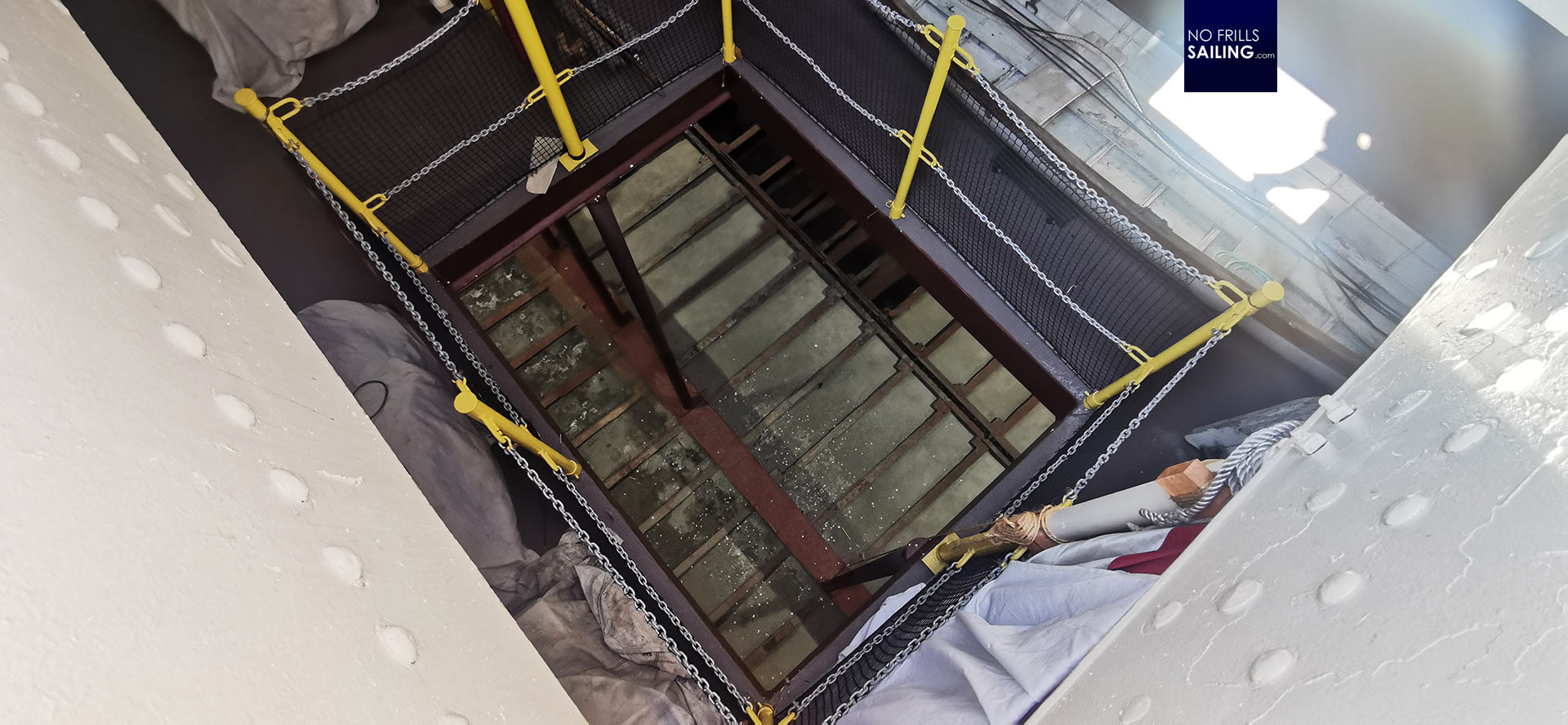
The only chance to get a very, very faint glimpse of the huge volumes this ship was able to carry was a peek from above through one of her partially opened loading bays. People like me, who know, could identify the tween deck and the concrete ballast down below between the iron backbone of the ship and the frames. It really is a disappointment because walking the freight-area would be a massive experience for visitors.
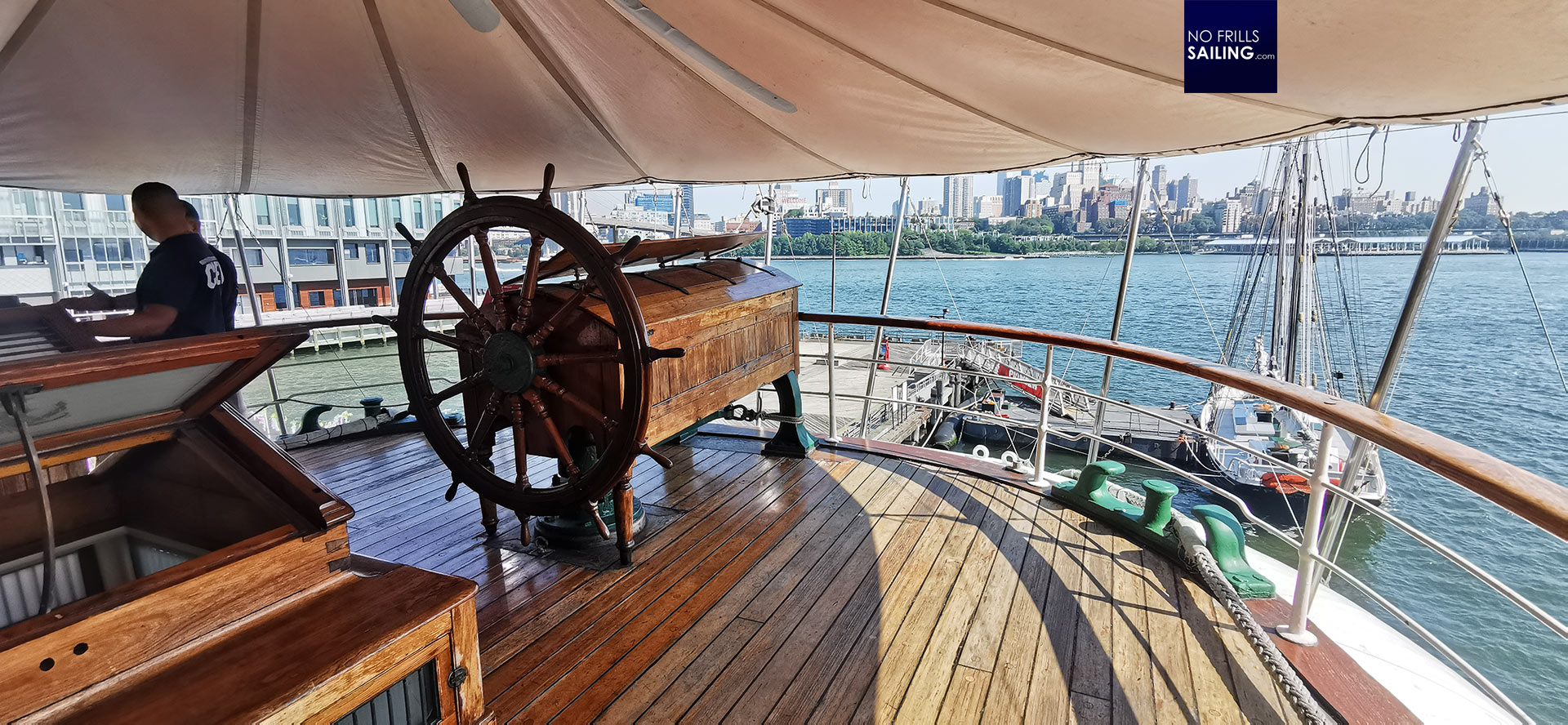
And here we are again with the sad reality of my American experience: There is so much potential here but apparently the lack of funding hinders conservation and renovation efforts. I could spot water and loads of rust down in the hull and I know from people renovating the PEKING just how awfully bad her condition has been when she was handed over back to Germany. I guess, it´s the same struggle to keep WAVERTREE afloat, not to mention the huge work and budget needed to fully renovate this ship. Literally millions of Dollars needed here, for sure.
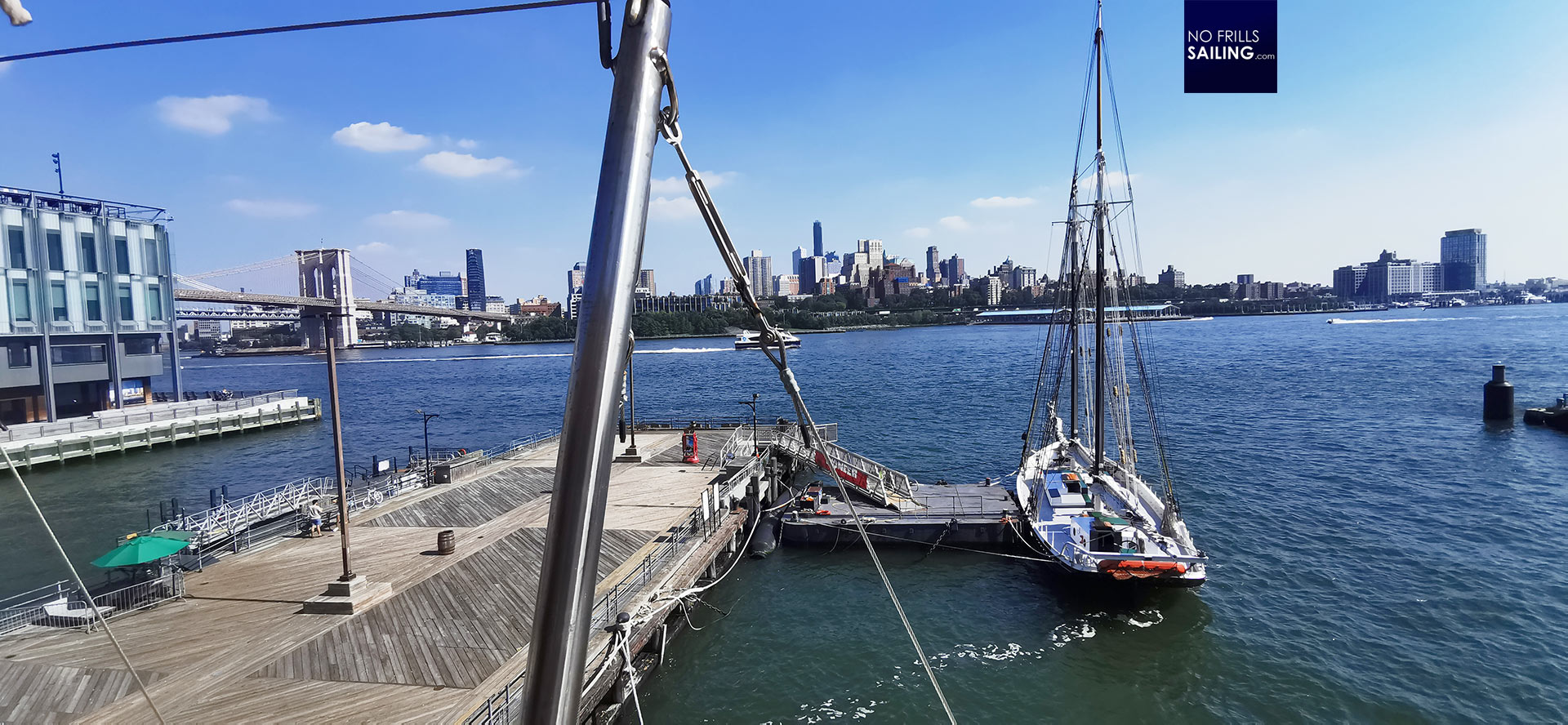
Standing on the poop deck of WAVERTREE I look down to another highlight of the South Street Seaport Museum: The PIONEER is a very fast and sleek schooner built in 1885, also from iron. She has a very interesting history as well and is still actively sailing. One can book a sail aboard PIONEER, which I didn´t do as we already had spent a day sailing schooner AMERICA 2.0 but got a bit disappointed to realize that even a visit aboard wasn´t possible due to a lack of staff. Equally, a visit aboard the lightship AMBROSE wasn´t possible for the same reasons.
Is it worth visiting?
So, here we are: Having one of the greatest locations possible in Manhattan, a wonderful, impressive view onto Brooklyn Bridge, the Southern tip of the Financial District with so many buildings and ships, sporting so much colorful and exciting history in one place. But it fails to deliver simply because it is a work-in-progress. I guess the museum struggles to keep everything afloat, collect money to step-by-step add improvements and upgrades to the museum.
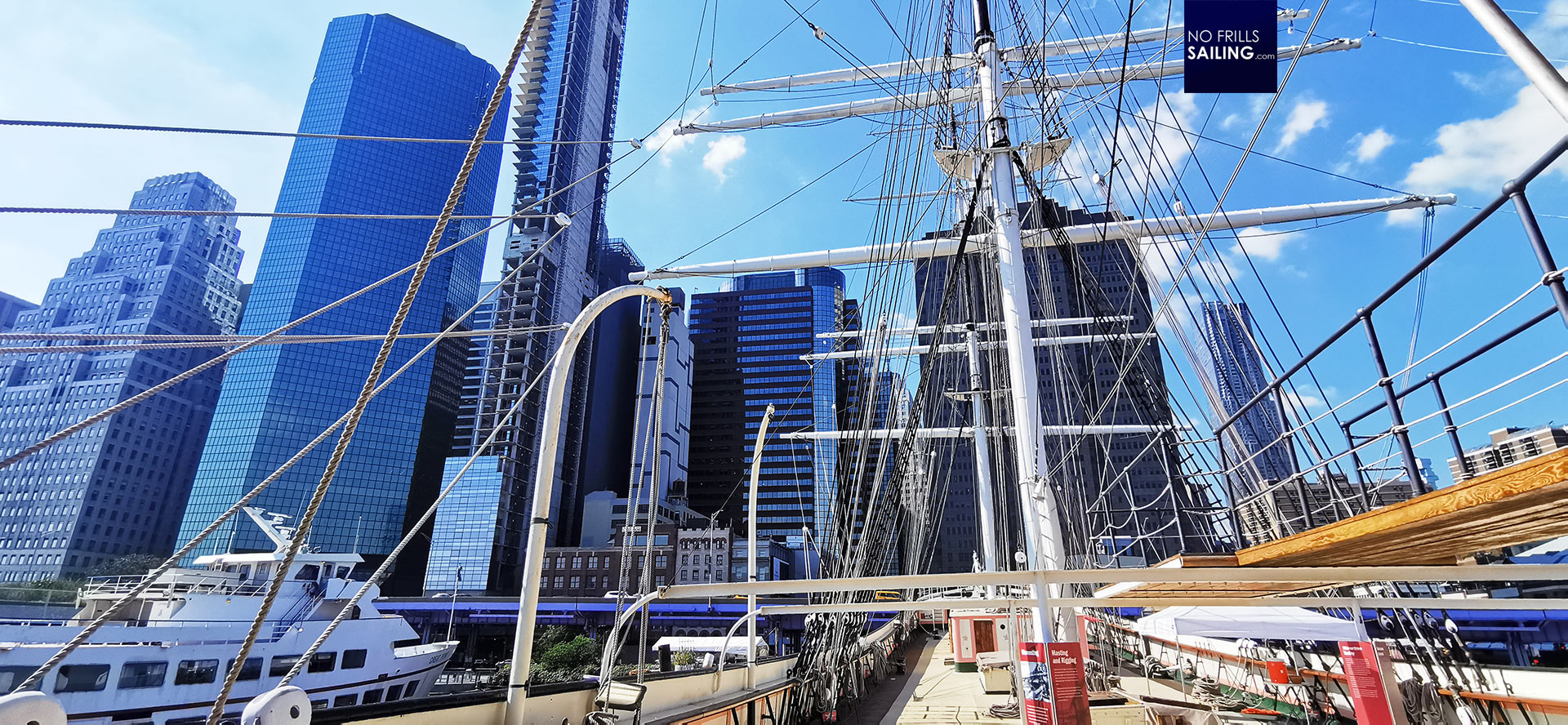
Is it worth the 18 Dollars? Well, one may be inclined to say “No”, but I´ll say: Yes, please! Go there, pay the price and help those dedicated guys to keep this wonderful place up and running! Help them to improve the character of the museum, to get more and more areas of the ships ready for visitors and hold up the history the South Street Seaport has. When there is no public funding, just the bare initiative of a few private people, we should honor their commitment and help. I surely will come back next time when I return next time to New York (which, according to my usual frequency will be around 2030) and I hope that South Street Seaport will flourish even more.
You may be interested in these other New York-related articles:
Visiting the Brooklyn Navy Yard
Sailing aboard AMERICA 2.0 in Manhattan
On TITANIC´s footprints in New York
